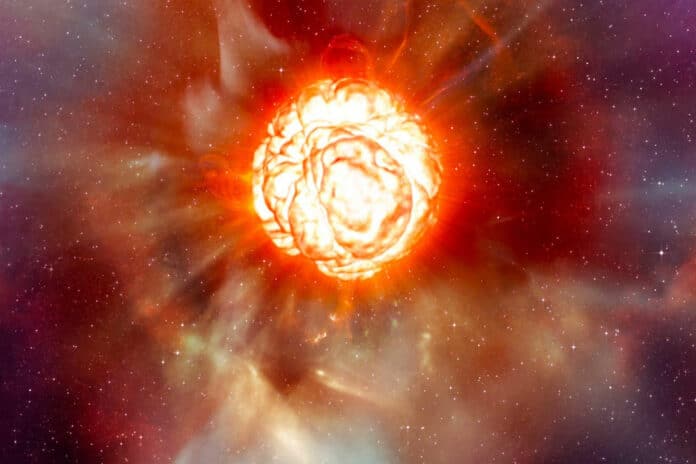From the early radiation of type II-P supernovae (SNe), it has been claimed that the majority of their red supergiant (RSG) progenitors are enshrouded by large amounts of circumstellar material (CSM) at the point of explosion. How long it took the star to accrete this material remains unknown. For the first time, scientists have created computer simulations of what red supergiants would appear when encased in these pre-explosion “cocoons.”
Astronomers from Liverpool John Moores University and the University of Montpellier have devised an ‘early warning system to alert when a massive star is about to end its life in a supernova explosion. The team identified that massive stars in the last phase of their lives, the so-called ‘red supergiant’ phase, will suddenly become fainter in visible light in the last few months before they die. A sudden accumulation of material surrounding the star, which shrouds its light, causes this dimming.
Old telescope archives reveal pictures of stars that exploded about a year after the picture was taken. The stars cannot yet have formed the hypothetical circumstellar cocoon because they appear normal in these photos. This shows that the cocoon is formed in less than a year, which is thought to be incredibly fast.
Benjamin Davies from Liverpool John Moores University, lead author of the paper, says, “The dense material almost completely obscures the star, making it 100 times fainter in the visible part of the spectrum. This means that the day before the star explodes, you likely wouldn’t be able to see it was there.”
“Until now, we’ve only been able to get detailed observations of supernovae hours after they’ve already happened. With this early-warning system, we can get ready to observe them in real-time, to point the world’s best telescopes at the precursor stars, and watch them getting ripped apart in front of our eyes.”
Journal Reference:
- Ben Davies et al. Explosion imminent: the appearance of red supergiants at the point of core-collapse. Monthly Notices of the Royal Astronomical Society. DOI: 10.1093/mnras/stac2427
